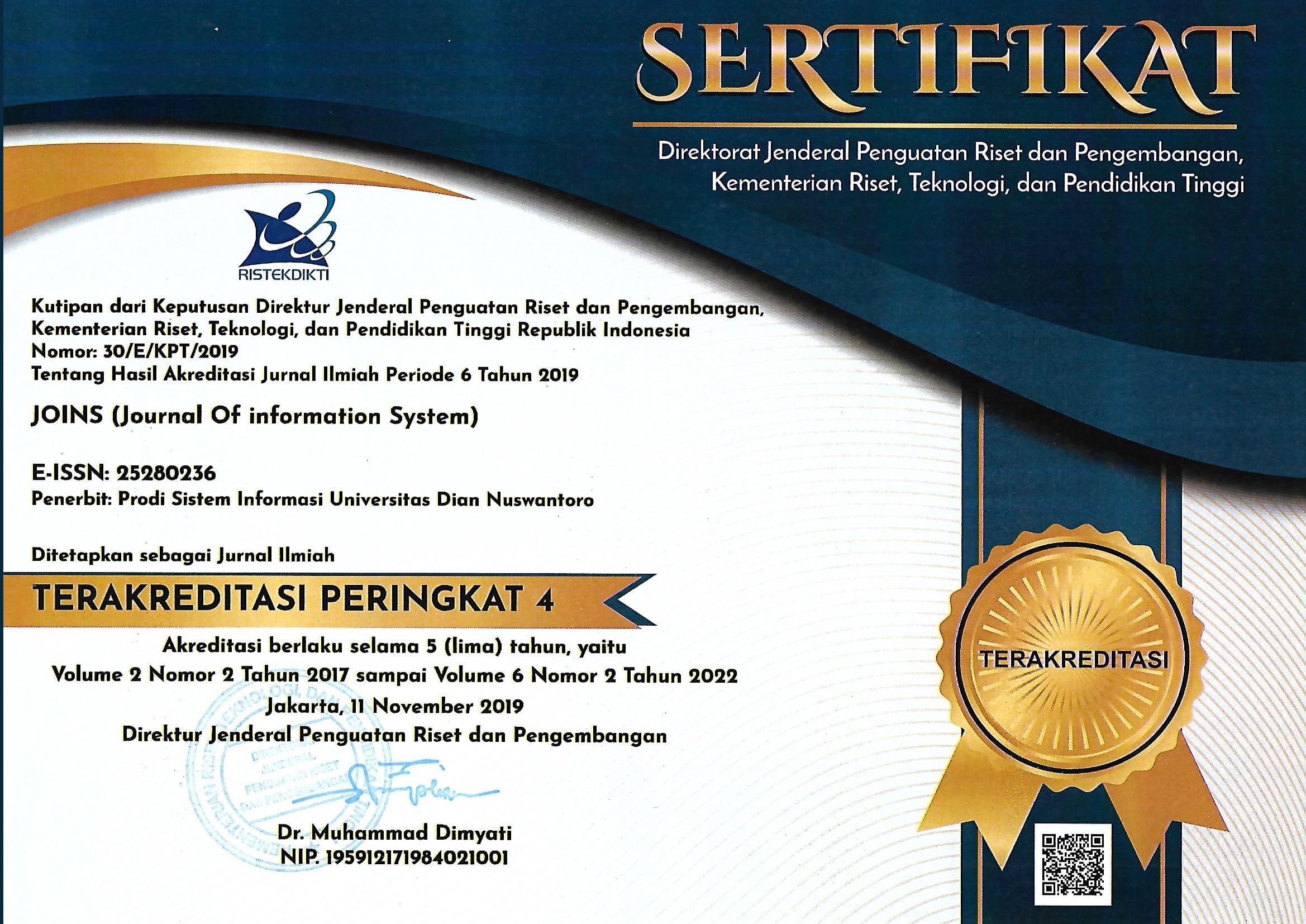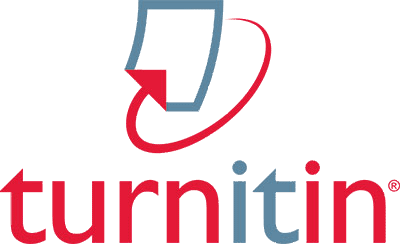Penerapan Arsitektur Enterprise pada Pelayanan Pendaftaran Anggota pada Fitnation Premiere Gym
Abstract
Abstrak
Fitnation Premiere Gym merupakan usaha yang bergerak di bidang jasa layanan fitness center kepada masyarakat yang ingin berolahraga dalam menjaga kebugaran tubuh dan pembentukan tubuh yang ideal. Untuk meningkatkan kualitas manajemen dan pelayanan, perlu adanya sistem informasi yang membantu dalam proses manajemen dan kinerja. Aktivitas bisnis utamanya adalah pendaftaran anggota, sistem pembayaran dan paket program mereka masih menggunakan sistem, database, aplikasi dan teknologi yang belum saling terintegrasi. Pengelolaan data, verifikasi pembayaran, pelaporan dan persetujuan kegiatan masih dilakukan secara manual. Dalam hal ini memiliki banyak resiko seperti kesalahan dalam pencatatan, waktu yang dibutuhkan untuk pendaftaran anggota relatif menjadi lebih lama, dan informasi yang dibutuhkan tidak terintegrasi. Dalam perencanaan strategis IS/TI sangat diperlukan suatu enterprise architecture agar dapat tercapai keselarasan strategi IS/TI dengan strategi bisnis dari organisasi untuk mengatasi permasalahan guna mewujudkan visi, misi, dan tujuan organisasi. Penelitian ini menggunakan metodologi TOGAF ADM dimulai dari preliminary phase, requirement management, architecture vision, business architecture, information system architecture, technology architecture, opportunities and solution, hingga migration planning. Hasil dari penelitian ini, yaitu suatu usulan model TOGAF ADM yang disesuaikan dengan proses dan kebutuhan bisnis dari fitness center dalam merancang Enterprise Architecture untuk perencanaan strategis IS/TI.
Kata kunci—Fitnation premiere gym, TOGAF, enterprise, arsitektur, teknologi informasi
Abstract
Fitnation Premiere Gym is a business that is engaged in fitness center services for people who want to exercise in maintaining body fitness and ideal body formation. To improve the quality of management and service, it is necessary to have an information system that helps in the management process and performance. Their main business activities are member registration, payment systems and program packages. They still use systems, databases, applications and technologies that are not yet integrated with each other. Data management, payment verification, reporting and approval of activities are still done manually. In this case, it has many risks such as errors in recording, the time required for member registration is relatively longer, and the information needed is not integrated. In IS/IT strategic planning, enterprise architecture is needed to align the IS/IT strategy with the organisation's business strategy to overcome problems in order to realize the organisation's vision, mission, and goals. This study uses the TOGAF ADM methodology starting from the preliminary phase, requirements management, architecture vision, business architecture, information system architecture, technology architecture, opportunities and solutions, to migration planning. The results of this study, namely a proposed TOGAF ADM model that is tailored to the processes and business needs of the fitness centre in designing Enterprise Architecture for IS/IT strategic planning.
Keywords—Fitnation premiere gym, TOGAF, enterprise, architecture, information technology
Full Text:
PDFReferences
S. J. NUGROHO, “Enterprise Architecture Planning Sistem Informasi Rsia Andini Dengan Menggunakan Togaf,” 2012.
G. R. Philipe Desfray, Modeling Enterprise Architecture With TOGAF. 2014.
R. A. Hermawan and I. D. Sumitra, “Designing Enterprise Architecture Using TOGAF Architecture Development Method,” in IOP Conference Series: Materials Science and Engineering, 2019, vol. 662, no. 4, doi: 10.1088/1757-899X/662/4/042021.
O. B. and A. Quezada, “Integrated Modeling of Business Architecture and Process Design with BPMN: Application to Hospitals,” J. Enterp. Archit., vol. 10, no. 1, 2014.
D. Y. Bernanda, K. Christianto, A. Chandra, and A. Pradipta, “Design enterprise architecture in forwarding company using togaf method,” Int. J. Open Inf. Technol., vol. 8, no. 8, pp. 79–83, 2020.
A. Nurhindarto and I. Gamayanto, “Developing Smart City 5 . 0 Framework to Produce Competency,” J. Appl. Intell. Syst., vol. 5, no. 1, pp. 23–31, 2020.
A. Setiawan and E. Yulianto, “E-Government Interoperability and Integration Architecture Modeling Using TOGAF Framework Based On Service Oriented Architecture,” Asian J. Technol. Manag., vol. 11, no. 1, pp. 26–45, 2018, doi: 10.12695/ajtm.2018.11.1.3.
X. Chen, “The development trend and practical innovation of smart cities under the integration of new technologies,” Front. Eng. Manag., vol. 6, no. 4, pp. 485–502, 2019, doi: 10.1007/s42524-019-0057-9.
A. Fadlil, I. Riadi, and A. Basir, “Integration of Zachman Framework and TOGAF ADM on Academic Information Systems Modeling,” INTENSIF J. Ilm. Penelit. dan Penerapan Teknol. Sist. Inf., vol. 5, no. 1, pp. 72–85, 2021, doi: 10.29407/intensif.v5i1.14678.
H. Qurratuaini, “Designing enterprise architecture based on TOGAF 9.1 framework,” in IOP Conference Series: Materials Science and Engineering, 2018, vol. 403, no. 1, doi: 10.1088/1757-899X/403/1/012065.
P. A. Ariawan, I. S. Putra, and I. M. Sudarma, “Analysis of Enterprise Architecture Design Using TOGAF Framework: A Case Study at Archival Unit of Faculty of Agricultural Technology of Udayana University,” Int. J. Eng. Emerg. Technol., vol. 2, no. 2, pp. 52–57, 2017.
H. Tannady, J. F. Andry, F. E. Gunawan, and J. Mayseleste, “Enterprise architecture artifacts enablers for it strategy and business alignment in forwarding services,” Int. J. Adv. Trends Comput. Sci. Eng., vol. 9, no. 2, pp. 1465–1472, 2020, doi: 10.30534/ijatcse/2020/85922020.
A. Hodijah, S. Sundari, and A. C. Nugraha, “Applying TOGAF for e-government implementation based on service oriented architecture methodology towards good government governance,” in Journal of Physics: Conference Series, 2018, vol. 1013, no. 1, doi: 10.1088/1742-6596/1013/1/012188.
F. S. Lee, A. Chakir, R. Nathanael, and J. F. Andry, “Architecture information system in electrical distribution company using TOGAF,” Int. J. Adv. Trends Comput. Sci. Eng., vol. 9, no. 5, pp. 7149–7156, 2020, doi: 10.30534/ijatcse/2020/38952020.
S. Kotusev, “The Critical Scrutiny of TOGAF Is TOGAF a Consistent Methodology or Just a Toolkit ?,” Br. Comput. Soc., no. April, pp. 1–9, 2016, [Online]. Available: http://www.bcs.org/content/conWebDoc/55892.
DOI: https://doi.org/10.33633/joins.v7i2.6396
Article Metrics
Abstract view : 198 timesPDF - 149 times
Refbacks
- There are currently no refbacks.
Index by:
















